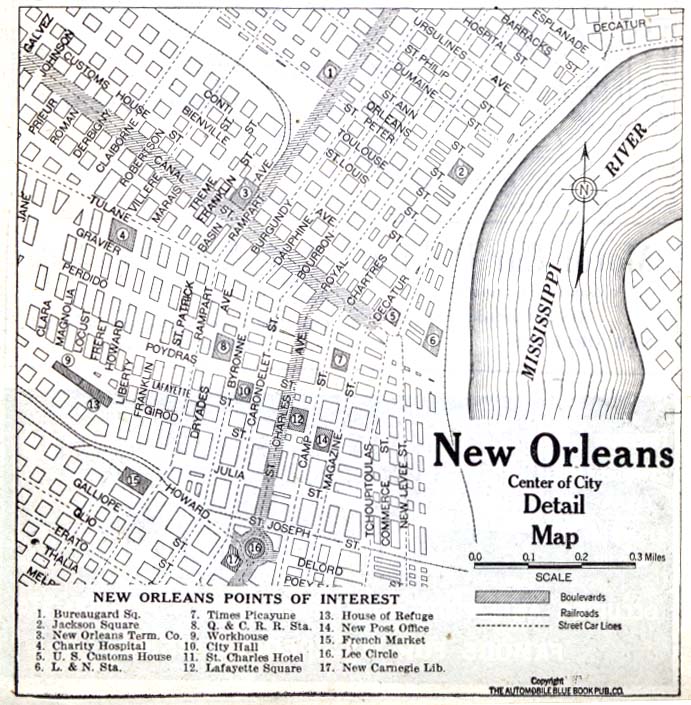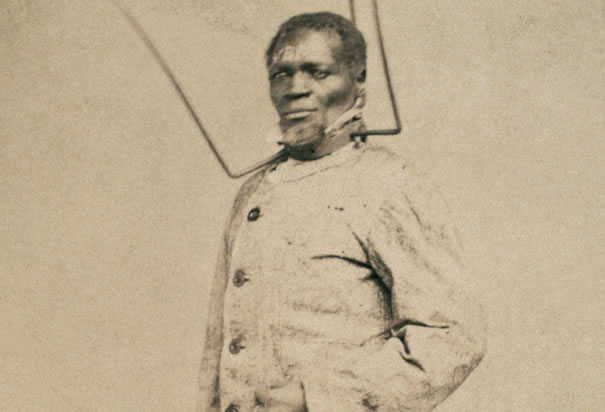
As reported in the Insurance Journal, in an article entitled, "Insurance Policy Included in Harrowing New Orleans Slavery Exhibit," by John Pope, on 15 April 2015 -- The cool, soothing exhibit rooms at the Historic New Orleans Collection’s Williams Research Center are a stark contrast to what’s shown: every wall and exhibit case documents the horrors of slavery.
There are inventories and illustrations of the auction of human beings, as well as reward notices for the return of slaves who escaped from plantations. An 1821 insurance policy taken out by William Kenner, the plantation owner whose family gave its name to the East Jefferson municipality, covered a shipment of slaves for the voyage from Savannah, Georgia, to New Orleans.

An 1849 map shows more than 50 slave markets all around the city. An engraving depicts a slave auction in the rotunda of the St. Louis Hotel, which occupied the French Quarter site where the Omni Royal Orleans Hotel stands.
“Under this dome, in this atmosphere of grandeur, paintings, furniture, property and people were bought and sold,” said Erin Greenwald, the curator of “Purchased Lives: New Orleans and the Domestic Slave Trade,” on view at 410 Chartres St. through July 18. Admission is free.

“Slave auctions were on the list of must-see sights,” she said.
Because the St. Louis Hotel wasn’t demolished until 1916, the auction block not only stood for a half-century after emancipation but attracted people who posed next to it in what Greenwald described as “fetishization.”
The people who posed weren’t just tourists. Greenwald said a recently acquired postcard from 1914, destined for the exhibit once it was catalogued, shows a black woman who had been asked to stand on the block where she had been sold into slavery for $1,500.
“It is deeply, deeply creepy,” Greenwald said.
A ship’s manifest showing slaves bound for New Orleans includes Plat Hamilton, the slave name imposed on Solomon Northup after he was kidnapped and sold into bondage. His memoir, “12 Years a Slave,” was the basis of an Oscar-winning movie.
The exhibit also shows a page from the diary of the Marksville lawyer whom Northup’s family hired to sue for his freedom. On Jan. 4, 1853, three days after John Pamplin Waddill wrote that he had been hired, he said that Northup had been freed and that he had collected his fee: $50.
“That’s an extraordinary document,” Greenwald said.
When Northup arrived in New Orleans, he had smallpox, Greenwald said, and was treated at Charity Hospital.
Treating slaves before they were sold was common, she said, adding that a Touro Infirmary patient register in the exhibit shows that about 45 percent of the hospital’s patients between 1855 and 1860 were slaves.
“They were trying to get their human property well so that they could sell them for a higher price,” Greenwald said. “They got a new set of clothes, they were fattened up, and they were made to exercise to build and tone muscles. They were given lessons on how to look lively so they didn’t look downcast or somber when buyers came in.”

In the exhibit are a livery coat for a slave who worked indoors, and a greatcoat, designed for outdoor work such as driving carriages, that Dr. William Newton Mercer provided for his slaves. The garments, with his family crest on silver and pewter buttons, came from Brooks Brothers.
Mercer had plantations in Mississippi and a New Orleans town house, which, Greenwald said, is now the Boston Club.
“If you were a resident of the city of New Orleans in the 1840s, you couldn’t go anywhere without encountering slavery,” she said. “It was just a part of life _ the cooks in hotels, the waiters in hotels, carters and draymen bringing goods back and forth, seamstresses and market women. All these people were people who were enslaved.”

There’s more to the exhibit than paperwork, pictures and garments. One case holds an iron collar, just big enough to encircle someone’s neck, with two tall prongs, each hanging a bell at ear level.
The 4-pound collar would be clamped onto a slave who had tried to escape. It’s “possibly the most viscerally disturbing object in the exhibition,” Greenwald said.
“It was worn 24/7,” she said. “Overseers and plantation owners would use them as a method of punishing and tracking runaway slaves because every time you move, the bell rings.”
Next to the collar is a classified advertisement asking the owners of a 20-year-old slave named William to take him home from the jail where he had been confined as an escapee.
“He is black and has a down look,” the advertisement reads. “When committed, he had around his neck an iron collar with three prongs extending upward; has many scars on his back and shoulders from the whip.”

While slavery was horrible, emancipation didn’t help much, aside from the fact that these men, women and children were no longer property, Greenwald said.
They had nothing, she said, and often had to work as tenant farmers on the land where they had been enslaved. A stereopticon slide in the exhibit shows people wearing rags and, with a few exceptions, barefoot.
Although the Freedmen’s Bureau was established in 1865 to help the formerly enslaved adjust to their new status, it provided no money to people who wanted to reconnect with families that had been torn apart by sales to different slave-owners.

Consequently, they resorted to placing classified advertisements seeking information. A wall is full of these heartbreaking appeals.
Jacob Stewart, who lived in Yazoo City, Miss., placed such an ad trying to find his mother, sister and brother. He hadn’t seen them since 1856, when he was sold in New Orleans.
There is no way to tell how many of these appeals were successful, Greenwald said, but she didn’t offer much hope.
“Some people found their families,” she said, “but the vast majority did not.” (source: Insurance Journal; Copyright 2015 Associated Press. All rights reserved. This material may not be published, broadcast, rewritten or redistributed.)


